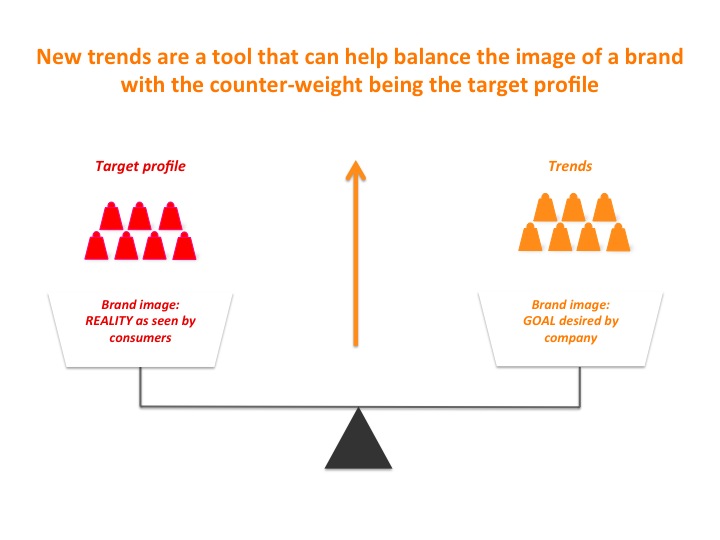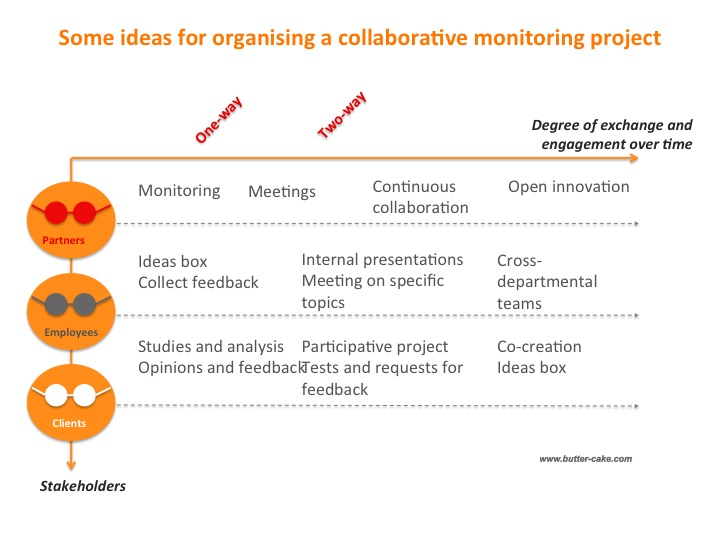Overview: Digital media is constantly evolving, and some trends are long-term while others are more short-lived. Keeping up with the times while making the right choice in terms of which trends to embrace for the brand and its customers is the communications balance that needs to be sought. To be proactive in this sense, all brands need to continually integrate monitoring and experimentation in their annual plans.
Digital media is constantly evolving and new trends appear every day. But a communications strategy doesn’t change every day. Will a company that wants to keep on course be forced to pass up interesting opportunities that appear during the year if they don’t fit in with the strategy and actions that were approved at the beginning of the year? How can these two seemingly conflicting demands be reconciled? How can we choose between all the new things that crop up in order to pick the ones that will prove particularly relevant for our business?
Innovating in communications is not necessarily about having deep pockets. It’s more a question of being open and curious, a posture that can be adopted by any company that wishes to do so. Organising monitoring activities and developing a culture of experimentation are two (non-exhaustive) ways of encouraging such an attitude, starting with selection criteria specific to each brand, such as its profile and that of its customers.
How to characterise digital innovation and position the brand in relation to it
On the Internet, there are some trends that last for several years and others that are much shorter. It is important to use them appropriately: being too late to embrace long-term trends can make a brand’s image seem outdated; hopping blithely from one trend to another can blur your brand’s image or end up proving expensive compared to the benefits obtained.
Knowing whether a trend is going to last is not always easy: it’s a question of observation, experience, judgement, and sometimes luck… For this reason, it shouldn’t necessarily be one of your absolute decision-making criteria, and sometimes it’s better to redo things later than to wait too long before acting. It’s safer to use criteria relating to elements that we can control than those we cannot: for a brand, a thought process and decision-making criteria that relate to its own strategy are more reliable than those based on analyst reports and benchmarking of the market or competitors. Innovation is a very relative concept, after all: the balance between image and effectiveness is linked to the characteristics of the two parties involved, the transmitter and the receiver. The transmitter (the brand) may want to innovate in its communications, but if the receiver (its target) is not open to the methods used, or if the gap between the two is too wide, then the best idea or execution will still fail. Innovation in communications should be evaluated in terms of the objective sought and the profile of the target. Examining these two parameters can help us reach us a decision about new communications methods.
 It is up to each brand to specify its goals in this area beforehand – key elements of the desired image versus key elements as perceived by prospects and clients – with the goal being to bridge the gap between the two.
It is up to each brand to specify its goals in this area beforehand – key elements of the desired image versus key elements as perceived by prospects and clients – with the goal being to bridge the gap between the two.
Once goals have been defined and decision-making critera clarified and shared, how can we ensure that we will have the opportunity to exercise them over the course of the year? Integrating goals relating to monitoring and experimentation in the annual communications plan is a good way of making innovation an ongoing concern rather than a nice-to-have.
How to integrate innovation in an annual communications plan
Innovation is not the result of chance, or financial means; it is above all the result of a continuous desire that bears its best fruits when reflected in the organisation and attitude of the company. Integrating innovation goals in the annual plan and fixing regular reviews is a good way of inserting it into corporate culture, and showing colleagues that it is not an add-on task but a core value. How can we set these goals, though? Is there a “degree” of innovation to be achieved? How can we set results-based goals if, by definition, we don’t know at the beginning of the year what potential new ideas we might want to integrate along the way, which is exactly what we’re talking about here?
There’s a difference there, and it’s anything but subtle: it’s not about fixing goals relating to RESULTS, but rather MEANS! We can only fix results-based goals when a trend is already proven, when we have benchmarks and feedback that can provide a basis for our estimates. For long-term trends that last a few years, that’s possible. But if we only fix results-based goals, our desire and willingness to try out new things will by definition be blunted, since for all unproven trends, failure is just as likely as success if we only look at the end result. However, innovation is as much of a process as it is a result, and finding the best practice is as much a question of experience as it is of benchmarking, especially on the web.
Defining means-based goals has the same requirements as defining results-based goals:
– a dedicated budget
– a specific person who is responsible
– a clearly-defined mission scope, both in terms of monitoring and experimenting
– regular follow-up, via indicators, looking back over operations, and internal reports
– management buy-in just like for any other goal
Time alone (e.g. 15% of time alloted to …) means nothing if it is not put to good use: if this cannot be done by the results to be achieved, it must be associated to a budget so that desire to act is transformed into action.
The means implemented may vary, with each company having to reflect on its own needs. Two types which could apply to all kinds of companies and which feed into each other are monitoring and experimentation, which are intrinsic components of the digital world.
Monitoring
There’s nothing new about monitoring trends and innovations. To integrate monitoring into a communications plan, however, you need to give it another dimension: make it a shared, collective project; move from passive observation to active or even pro-active monitoring. This major difference in attitude generally translates itself into more ideas and projects at the end of day. How should you go about it? There is no shortage of ideas, drawing on all the new forms of collaboration made possible by the Internet. A few clues are given in the illustration below, which shows the level of interactivity and the different stakeholders from the company (three in this example). It is not a conventional structure when looking at monitoring projects, but changing the way we look at a topic often helps us to come up with new ideas… There can be a fine line between monitoring and experimentation, with each activity feeding into the other, and their forms are limited only by the imagination. What often makes the difference is not the material you start with but the way in which the project and the teams are managed in order to get the most out of it!
Experimenting
The opportunity to test new practices at lower cost and quickly receive feedback is one of the major benefits of the Internet. However good an idea may seem on paper, experience is the best way to make the most of a new technology or a new service. This way, you can really get to grips with it, adapt it iteratively to the specific needs of your brand and its consumers, and embrace new trends without being dependent on what others are doing with them.
One way of integrating experimentation into an annual communications plan is, for instance, to define a test plan for emerging media and services: part of it could be defined during the year, and the rest completed on an ad hoc basis as a result of monitoring or opportunities that arise during the course of the year. This test plan may be focused (on a target, on one of the brand’s specific products or services, on a particular geographical region, on a particular channel…) or it may be more open. Regularly performing tests may require you to review the project management or internal organisation; if testing is seen as a delaying factor or as leading to inefficiency, it will never be carried out properly (for instance, testing different versions of email campaigns, newsletters, web pages, etc).
In conclusion, digital media is in continuous movement, but that doesn’t mean there is a new revolution every day. The trends to follow are often relative: the best way to separate the good from the less good is to start by defining yourself with regard to innovation, and to clarify the stance of your brand or company, since the same new thing does not always benefit every brand in the same way. Innovation is also a process: by developing an overall corporate culture oriented towards this, above and beyond those teams directly responsible, and by carrying out monitoring and experimentation activities on a permanent basis, we give ourselves the chance of integrating those new things that will positively and effectively power a brand or company strategy at the right time and in the right way.
This article is the last of a series regrouped in the ebook « Building a digital strategy », available for download in PDF format on this site.

